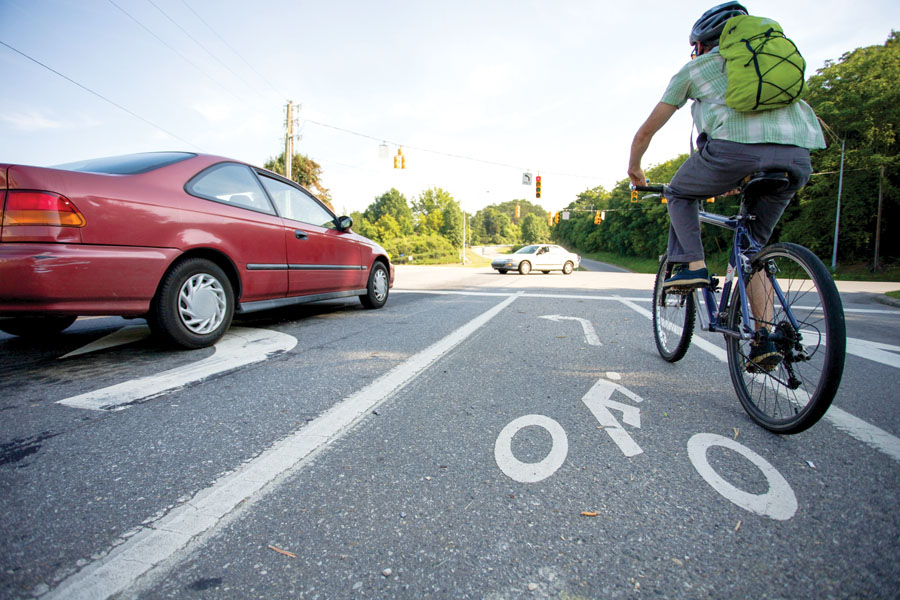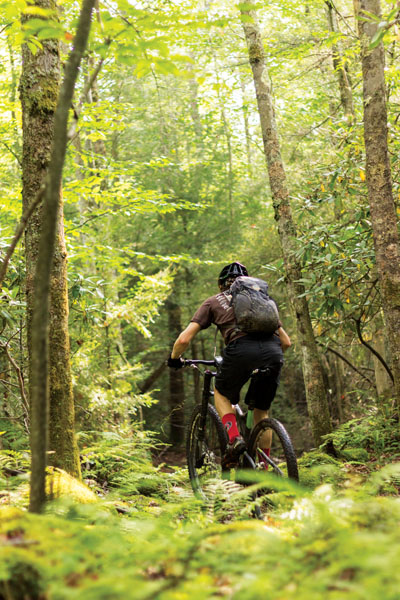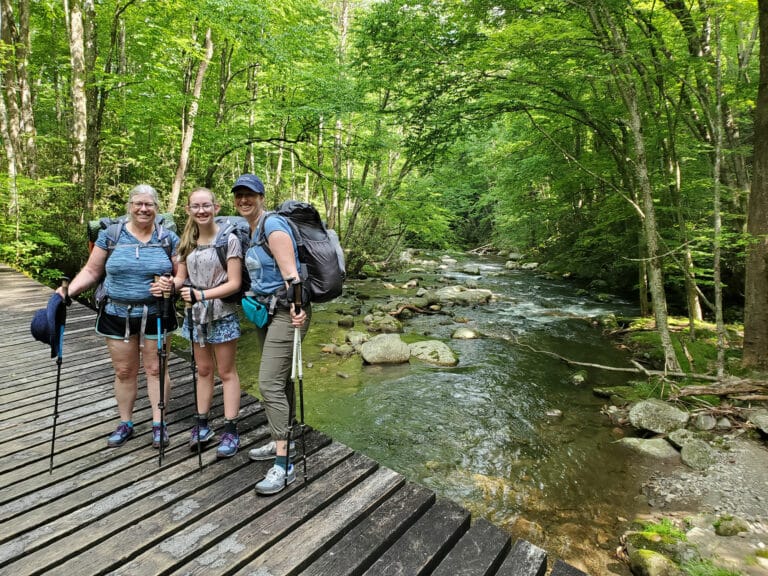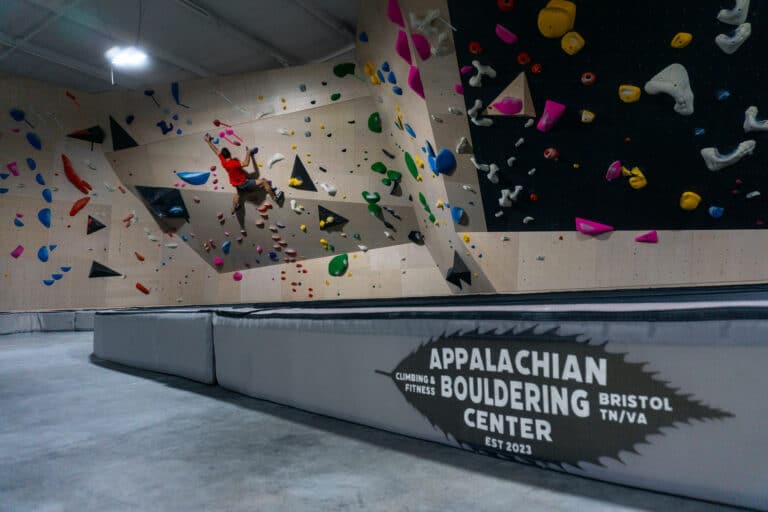The rising sun hangs low in the sky, forcing you to squint from the glare. There’s a honk from behind. You nudge forward, brake, stop, nudge forward again. A red Mazda cuts you off, spiking your annoyance. You hit another red light. Another honk. An hour passes.
Just beyond your windshield is a concrete circus, a parade of taillights inching along to hammers and drills that fire like gunshots from behind blaze orange barriers. The rhythmic beep of a dump truck in reverse pierces the disorderly day like a metronome.
Your phone vibrates, reminding you of a meeting that will start, with or without you, in 15 minutes. Your exit is in sight, the dotted line to freedom within a few hundred yards, but you’re gridlocked in, surrounded on all sides by bumper-to-bumper traffic.
You’re stressed, irritated, anxious. And it’s just 8 o’clock on a Monday.
Sound familiar? If you’re like three-fourths of the American population, this is the daily commute. Whether your drive to work is three miles or 30, on average, people spend just over an hour a day in the car.
That number is on the rise, too. Back in 2001, researchers found that Americans spent 10% more time in their cars between the years 1995 and 2001 but traveled about the same number of miles. And that was only 15 years ago. Today, there are 2.28 vehicles per household, or about five vehicles for every four drivers, with 76% of the population driving alone to work. That means more cars on the road and more time in the car for you.
In 2009, the IBM Corporation performed a study that concluded this increase in congestion is bad news for all—environmental impacts aside, 44% of drivers felt that traffic increased stress, 25% admitted to becoming angry, 16% said their commute negatively impacted their work performance, while 11% believed all of those effects combined made them lose precious hours of sleep.
When you take into account that the average household annually spends three months’ pay on transportation, and that for every hour spent behind the wheel, your odds of being obese increase by six percent, it’s no wonder the majority of our population is strung-out, overweight, and late.
How did things get so bad?
After World War II, the car became a symbol of American fortitude, of freedom and wealth and independence, as integral to the American Dream as the white picket fence. The government supported that vision, too, embarking on the largest public works project to date, the Interstate Highway System, which joined the nation in more than 40,000 miles of pavement.
Since then, the country has continued that trend of development, creating over 22,000 new lane-miles every year since 1980. Our forefathers dreamed of a connected nation, an intricate web of roadways spanning the country. They achieved that dream, all right, but neglected to consider the implications of urban sprawl to the American people.
In 2009, the nation unsurprisingly ranked the automobile as its most important possession with 88% of the population claiming it a necessity, not a luxury. Minimal public transportation opportunities have made owning a car imperative if you live outside of any major U.S. city and don’t work at or close to home. For just over a quarter of the American workforce making minimum wage, this means having a vehicle is not only a necessity but also a financial straitjacket.
Today, upwards of 204 million cars are clogging your commute every morning. Considering there are just 318 million people in the country, it should come as no surprise, then, that the U.S. alone is responsible for a quarter of the world’s oil consumption.
As dismal as these statistics may sound, there’s a silver lining to it all—the tides are changing. Last year, the country consumed the lowest amount of fuel in 30 years and drove roughly six percent fewer miles than what was recorded a decade ago. While those numbers are on the decline, two new trends are starting to take root—an increase in households without cars entirely and an increase in bike commuting. Perhaps it was the recession or more environmental awareness, the reality of student loans or maybe a simple generational shift in values. Whatever the reason, Millennials are moving to the city to walk more, ride more, and ultimately, drive less.
As bicycle and pedestrian coordinator for the Louisville Metro Department, Rolf Eisinger is being tasked with tackling this change in attitude. A former elite road racer, Eisinger says he was pleasantly surprised to see Kentucky’s largest city, which ranks 28th in the top 30 most populous cities in America, so young and active.
“There’s always some kind of marathon or mini marathon or biking race going on downtown,” Eisinger says. “The Louisville Bicycle Club has over 1,300 active members and hosts rides every day of the year, most days more than one.”
The biking culture isn’t new to the area. The Louisville Bicycle Club’s history stems as far back as the late 19th century when the club existed as the League of American Wheelmen. Yet since the year 2005, when the local administration hosted its first bike summit, the city’s two-wheeled scene has exploded. There’s a city bike team, the Kentucky Bourbon Trail, plans for a 100-mile “Louisville Loop” park system, and in 2013, the city hosted the first World Cyclocross Championship to ever grace U.S. soil. Even the city’s namesake university has embraced the cycling culture, earning a silver level ranking for bike friendliness from the League of American Bicyclists.
“It’s an eye-opening town to me,” says Scott Martin, Parks Director for The Parklands of Floyds Fork, “almost like a mirror city of Richmond except instead of a NASCAR track we have Churchill Downs.”
That, along with a nationally recognized food scene, a vibrant bluegrass culture, and the world’s only Underground Bike Park. It’s no wonder the city is flourishing. The creation of more green spaces and additional bike safe havens like the Parklands are boosting that drive, too. When completed, the Parklands will provide 4,000 acres, over 50 miles of linear trail experiences, and another world-class bike park to Louisville residents and visitors. And the interesting part? The park was entirely funded through private donations, all 130 million dollars of it.
“And that was in the depths of the recession,” Martin adds. “It’s neat to see this population get out and get active. You don’t have to go to Portland or Boulder to do it. When you provide the infrastructure, even in the KFC belt, people will use it the same way they use it out West.”
By “infrastructure,” Martin means bike lanes and neighborways, or “bike boulevards.” Louisville has installed over 40 miles of bike infrastructure during the past few years. In 2014 alone, the city put in five roadway reconfigurations, converting four lanes into two-lane streets with designated turning and buffered bike lanes.
“I didn’t see as much bicycle riding as a form of transportation when I first moved here,” Eisinger says. “I feel like every year, there seems to be more and more of that.”
That’s something which Atlanta native and Southern Off-Road Bicycle Association’s (SORBA) Atlanta chapter president Brett Davidson wishes his hometown had already addressed. Later this year, Atlanta will finally install over 50 bike share stations. Though locals overwhelmingly support the program, the milestone comes nearly three years behind some of the city’s southern counterparts, like Chattanooga and Charlotte. Remember the “snowpocalypse” of 2014? Atlanta, of all cities, could surely stand to lose a few cars from the commute, but concerns for safety have kept cyclists off the roads and in the woods for the last 15 years.
“We have a great mountain bike scene,” Davidson says. “We have tons of great riders that travel throughout the Southeast and race, but a lot of what they’re doing is leaving town. We’re just now getting to the point that people are realizing, hey, I don’t want to necessarily sit in my car and go an hour out to a trail system and back just to get a ride in.”
Yet if you look at a map of Atlanta, that’s precisely what cyclists are being forced to do. The nearest mountain biking, Sope Creek, is at the outermost edge of Interstate 285, and it takes anywhere from 30 to 45 minutes just to reach its trailhead. Though completion of the BeltLine and in-town portion of the Silver Comet Trail will expand commuter cycling, Atlanta proper is still lacking legal singletrack.
“We have a lot of wooded space in Atlanta that is run by the park system and doesn’t really have anything going on,” Davidson says. “This is a ball and bat culture and a rec center culture, so we’ve kinda had to sell outdoor recreation.”
Those efforts haven’t gone unnoticed. Earlier this summer, SORBA Atlanta received a $25,000 grant from REI to develop an in-town, beginner-friendly trail at Southside Park. It will be the first purpose-built mountain bike trail system in the city of Atlanta and easily accessible by bike. According to Davidson, the timing couldn’t be better. Just a decade ago, Atlanta was losing 500 acres of open space to development per week. Yet as more and more young professionals and families move within city limits, an increased interest in nearby recreational opportunities is putting pressure on Atlanta to change its thinking.
“Atlanta’s a city that consistently reinvents itself every 20 years,” Davidson says. “Our symbol is a phoenix rising from the flames. We’re not gonna be the LA of the South. What people want closer to where they live is more of the incredible outdoor resources we already have in town.”
Just a couple hours north of Atlanta, the city of Chattanooga, Tenn., is seeing the impacts of investing in those outdoor resources. A quarter the size of Atlanta, Chattanooga has come a long way since being proclaimed the “dirtiest city in America” in the late ‘60s.
“We want access to the outdoors for all,” says Philip Pugliese, Director of Chattanooga’s Active Living & Transportation Network (ALTN). “Having well over 100 miles of singletrack trails within 10 miles of downtown has created special opportunities for the community.”
In 2011 and again in 2015, Outside Magazine’s readers voted Chattanooga as the “Best Town Ever.” The once-choking, polluted industrial pit is now known as the “Scenic City,” a hub for outdoor recreation. The city regularly serves as host for big-name events like the Volkswagen USA Cycling Professional Road and Time Trial National Championships and has even organized its very own century ride for 28 years running, the 3 State 3 Mountain Challenge.
Two years ago, the city’s Sports Committee signed a five-year contract with Ironman, and the first two years of Chattanooga’s triathlons saw such success that Ironman organizers decided last year to add an Ironman 70.3 to the city’s race repertoire. Additionally, Chattanooga is currently among the top three contenders to host the 2017 Ironman 70.3 World Championships.
“The events that bring cyclists to Chattanooga, whether as a participant or a spectator, really give people an opportunity to see what the community has to offer,” says Pugliese. “People cycling are often seen as an indicating species of a community. If one can see families with children cycling safely through a neighborhood, that creates a sense of well-being, and a sense of that sends a subliminal message to the quality of life in that community.”
People walking, jogging, riding bikes. That’s exactly what brought Tabi Cooper 800 miles south from Milwaukee to the city of Greenville, S.C. Cooper and her husband stumbled upon Greenville just a year ago, and, on a whim, decided to throw down some roots in the South. Cooper now runs Greenville Goods, a co-op style business that promotes all-things Greenville.
“There is so much to do within just a short distance,” Cooper says. “Greenville is so easy to bike. You can just jump on a trail and ride up to the brewery or the Swamp Rabbit Café.”
But Greenville as Cooper knows it is a little different than the city Boyd Johnson, owner of carbon wheel manufacturing company Boyd Cycling, moved to a decade ago. Though the area has always housed an avid road racing community, the opening of the Swamp Rabbit Trail in 2011 created not just another training route for those same road cyclists, but also a safe place to commute and an economic driver for local businesses. In the Greenville Health System’s Three Year Findings survey on the Swamp Rabbit Trail, businesses reported an increase in sales and revenue from as low as 10% to as high as 85%.
“Downtown living is expanding like crazy,” Johnson says. “A lot of times towns will put in these types of trails and everyone uses it at first and then participation dies off. Now [the Swamp Rabbit Trail] gets busier and busier.”
Johnson relocated his shop to a trailside warehouse just one year after the trail opened, but not for any hopes of increased business—after all, most walk-ins to his shop aren’t going to drop a grand on a set of carbon wheels for their commuter bike. But for Johnson, a father to a three-year-old girl who also likes to ride, the new site affords him the same safety and convenience that kept half a million people coming back to the Swamp Rabbit Trail during its inaugural year.
“You have to play the hand you’re dealt, and fortunately, we got a good one,” says Mayor Wayne McCall of Travelers Rest, S.C., or “TR” if you’re from the South. “We’re all about travel and trails and trees. Anything that starts with ‘tr.’”
As Mayor McCall likes to say, Travelers Rest is “the front porch” of the Swamp Rabbit Trail. “It begins and ends here, whichever way you want to look at it.”
In the last few years, Travelers Rest has made a near 180-degree turnabout, thanks in part to the opening of the Swamp Rabbit Trail. Not only does the rail-trail afford an active means of connecting TR to Greenville (a 20-mile ride one way), but it also provides businesses in this once sleepy southern town with a steady stream of visitors. From July 2012 to June 2013, tourists dumped $6.7 million dollars into the TR economy, helping to revitalize the town’s Main Street with new restaurants and mom-and-pop shops.
“Back around 2001, the economy had passed us by,” Mayor McCall says. “We were just a suburb of Greenville. There was no reason for people to stay here. You couldn’t even buy a pair of socks.”
Now, you can take a walk downtown and visit a beekeeping supplier, wine shop, moonshine distillery, brewery, even a canoe manufacturer (and yes, there is a place to buy socks). Retired road cyclist George Hincapie, mostly known as Lance Armstrong’s right-hand man, even decided to make Travelers Rest the setting for his boutique, the European-styled Hotel Domestique.
But success for TR hasn’t come easy, and as Mayor McCall says, “it’s like catching lightning in a bottle. You have to hitch up to the start when it comes.” Take Chattanooga, for instance. Recognizing its potential within the context of recreational tourism, the city built trails and outdoor infrastructure with the thought that the people will follow.
Well, follow they did, and with more than just their bikes and running shoes. Remember that Ironman contract? The city estimates those events will bring in $8 million annually to the local economy—that’s $40 million over the course of the city’s five-year agreement.
“If there were no bikes, this area would take a hit. At least 20%,” says Mike Goss, General Manager at Sirianni’s Café in Davis, W.Va. “Biking is an eight-month event. It’s not like skiing where you get three months out of it.”
The quaint town of Davis has a long history of mountain biking, its reputation for gnarly singletrack tracing back to the late ‘80s and early ‘90s, when the sport was new and endurance events were hot. Races like Granny Gear’s 24 Hours of Canaan and the Blackwater 100 annually drew 500 racers to Davis, which is just a few hundred shy of the town’s year-round population.
“Bikers support a lot of these shops in town, and it’s not just the touristy bikers—it’s the people that live here and bike, too,” Goss says.
Rob Stull is one of those area locals who reside and recreate in Tucker County. Earlier this year, Stull took over ownership of Blackwater Bikes, the bike shop in Davis that opened in 1982 at the peak of 24-hour racing’s heyday. Since then, the area has seen major shifts, both in the world of mountain biking and the closer-to-home issue of land access, but Stull knows the area still boasts some of the best techy mountain biking around.
“This is the original place where you went to bike,” Stull says. “The trails here were developed early on and we have a reputation, but it’s going to take a serious commitment and serious level of investment to the point where we can compete against other recreation towns.”
There’s no doubt about it—the energy is there. Between professional cyclist Sue Haywood’s kids’ and women’s skills clinics, weekly group rides for all ages, the annual Canaan Valley MTB Fest, and a handful of area races, the place certainly has no shortage of biking opportunities. There’s a vibrant culture in town, too—craft pizza, local beer, and weekly live music at The Purple Fiddle provide plenty for visitors to experience after a day on the trails. The challenge Davis now faces is finding the funds to improve upon family-friendly trail experiences like the unfinished Blackwater Canyon Trail, a rail-trail that, when completed, could rival Greenville’s Swamp Rabbit Trail and Atlanta’s BeltLine system in scenery.
“Anybody could move to an Asheville or a Charlotte where this stuff is already happening, but we’re here and we’re building that sense of community and making it happen,” Stull says.
Fortunately for people like Stull who want to harness that community interest in fitness and active transportation, the government wants to help. You can thank Oregon’s Rep. Earl Blumenauer for that. In 1996, Blumenauer founded the Bike Caucus, a bipartisan congressional committee that has helped prioritize biking initiatives for the past two decades.
Through the support of the Bike Caucus came bills like Moving Ahead for Progress in the 21st Century (or MAP-21 as it is mostly known) in 2012, which allocated funds for a “Transportation Alternatives Program” (TAP) that created more off-road and on-road facilities for pedestrians and cyclists. Though the budget for those projects has since been reduced, other pending bills like the Bike to Work Act, which provides a tax benefit for commuters, and the Bicycle and Pedestrian Infrastructure Improvement Act, continue to be stalled in Congress.
In just the last decade, bike commuting has increased 60 percent. Considering fuel prices, obesity rates, and health care costs are also on the rise, this upsurge is a welcome one. People want safe, affordable, and convenient transportation. They want recreation close to home, their daily commute quicker, the air around them cleaner.
And while, of course, the car will always hold its place in American households, it’s only a matter of time before the preferred method of daily transportation drops four wheels for two.









